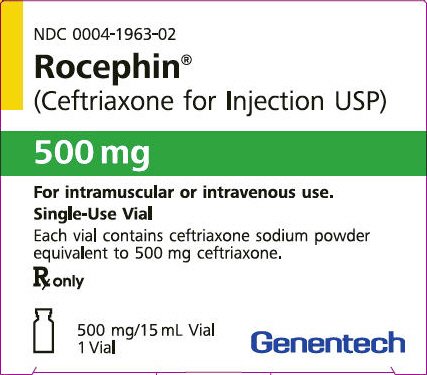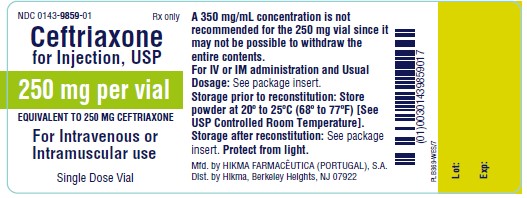20 facts about Ceftriaxone (Rocephin)
Here are 20 key facts about Ceftriaxone, commonly known as Rocephin:
-
Classification: Ceftriaxone is a third-generation cephalosporin antibiotic, which belongs to the beta-lactam family of antibiotics. Source: IDStewardship.
-
Mechanism of Action: It works by inhibiting bacterial cell wall synthesis, effectively killing susceptible bacteria or preventing their growth. Source: Mayo Clinic.
-
Broad Spectrum: Ceftriaxone is effective against a wide range of bacteria, including both Gram-positive and Gram-negative organisms. Source: DrugBank.
-
Common Uses: It is used to treat various infections, including pneumonia, skin infections, urinary tract infections (UTIs), and certain types of meningitis. Source: WebMD.
-
Sexually Transmitted Infections: Ceftriaxone is also indicated for the treatment of gonorrhea and pelvic inflammatory disease, both of which are sexually transmitted infections. Source: MedlinePlus.
-
Administration: Ceftriaxone is generally administered via injection, either intramuscularly or intravenously, making it suitable for outpatient and inpatient settings. Source: RxList.
-
Dosage Adjustments: Dosage may need to be adjusted in patients with renal impairment, as Ceftriaxone is primarily eliminated by the kidneys. Source: Reference Medscape.
-
Not Effective for Viral Infections: It's important to note that Ceftriaxone will not treat viral infections, such as colds and flu. Source: Mayo Clinic.
-
Potential Side Effects: Common side effects include pain at the injection site, rash, diarrhea, and allergic reactions. Source: WebMD.
-
Serious Reactions: Although rare, severe allergic reactions (anaphylaxis) and Clostridioides difficile-associated diarrhea can occur with Ceftriaxone use. Source: RxList.
-
Drug Interactions: Ceftriaxone may interact with other medications, including anticoagulants, which can enhance bleeding risk. Source: DrugBank.
-
Use in Children: Ceftriaxone is often used in pediatric settings and is considered safe for use in children and infants for specific bacterial infections. Source: Reference Medscape.
-
Plasma Concentration: The drug reaches maximum plasma concentrations within 1-2 hours after administration. Source: IDStewardship.
-
Usage in Surgery: It may be used prophylactically in certain surgeries to prevent infections. Source: RxList.
-
Stability: Ceftriaxone is stable in a variety of conditions but should be stored at room temperature and protected from light. Source: IDStewardship.
-
Hepatic Excretion: While primarily excreted by the kidneys, some Ceftriaxone is also secreted via the liver and bile. Source: DrugBank.
-
Pregnancy Category: Ceftriaxone is classified as a category B drug for use during pregnancy, indicating that it is generally considered safe but should be used only if clearly needed. Source: WebMD.
-
Cross-Reactivity: Patients with a penicillin allergy may experience cross-reactivity to Ceftriaxone and should be monitored closely. Source: RxList.
-
Bacterial Resistance: The emergence of bacterial resistance to Ceftriaxone is an ongoing concern, and susceptibility testing is recommended before use. Source: DrugBank.
-
Emergency Use: In cases of severe bacterial infections, Ceftriaxone can be used in combination with other antibiotics to enhance efficacy and cover a broader range of pathogens. Source: MedlinePlus.
These facts illustrate the vital role of Ceftriaxone in treating bacterial infections, along with its mechanisms, applications, and precautions.
Sources


Related Questions
Work fast from anywhere
Stay up to date and move work forward with BrutusAI on macOS/iOS/web & android. Download the app today.
